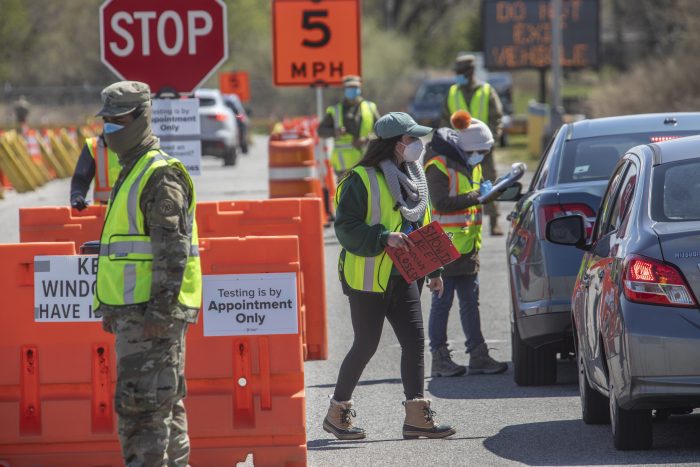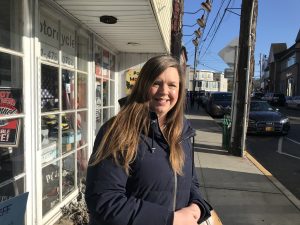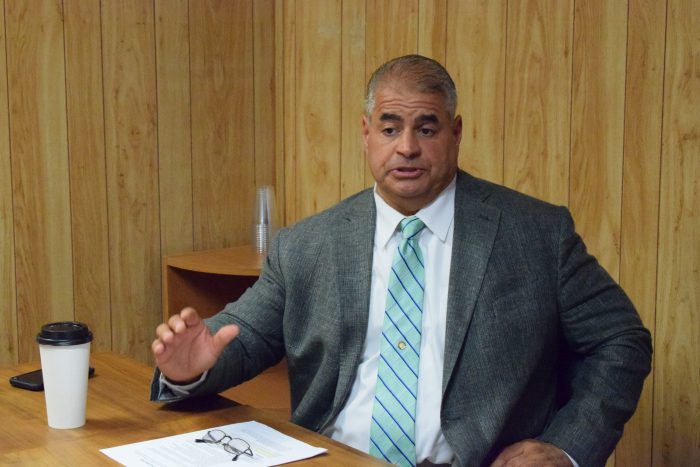This week marked two years after the World Health Organization declared COVID-19 a pandemic, leading to the shutdown of schools, the closing of businesses, a surge in emergency room visits, and a desperate search for treatments to a new disease that was sickening and killing people around the world.

For health care providers, life two years after the pandemic has dramatically improved from those first few days when medical professionals had far more questions than answers.
“The cloud that was hanging over our heads seems to have disbursed,” said Dr. Sunil Dhuper, chief medical officer at Port Jefferson’s St. Charles Hospital. “I feel a lot more optimistic now.”
Indeed, Suffolk County officials tracked a host of numbers throughout the pandemic, which carried different meanings at different times. In 2020, state officials considered a 5% positive testing rate as a potential warning sign to consider closing schools. Entering another phase of reopening businesses required that hospitals have at least 30% of their hospital beds available.
Those numbers, fortunately, have declined dramatically, with the current positive seven day testing rate at 1.5% for Suffolk County as of March 15 and 35% of hospital beds available, according to the New York State Department of Health.
Lessons learned
Amid much more manageable levels of COVID-19, health care officials reflected on the last two years.
For Dr. Adrian Popp, chair of Infection Control at Huntington Hospital/Northwell Health, the “most important lesson we have learned is that we can never lose hope,” he said in an email.
Despite an initial United States response to the pandemic that Popp described as disorganized and confusing, he said “communities got together fast, local leaders took charge and, I think, we did our best under the circumstances.”
Carol Gomes, chief executive officer for Stony Brook University Hospital, suggested that one of the biggest lessons was to remain flexible, with the “ability to pivot into paradigm shifts that were unimaginable,” she wrote in an email.
She described how most good business practices suggest a just-in-time inventory, which is efficient and cost effective.
“During the pandemic, when the national supply chain was considerably weakened, we shifted to an entirely different model and now focus on stockpiling key supplies to ensure continuity of services,” Gomes wrote in an email.
Stony Brook Hospital has dedicated more space to ensure the availability of supplies by securing additional warehouse facilities, Gomes said.
Dhuper said a high level of coordination and cooperation in health care created the ability to “work wonders. A classic example of that is the mRNA COVID-19 vaccines. I think it has been a phenomenal accomplishment and a true game changer,” Dhuper said.

Low point
Amid a series of challenges over the last two years, health care professionals also described some of the low points.
Popp recalled April of 2020, when COVID hit one of the nursing homes in the community. Of the 50 elderly residents under his care, 24 died in the span of two weeks. During this time, the hospital couldn’t even test for COVID. Popp described the losses as “heartbreaking.”
Dhuper, meanwhile, pointed to the roller coaster created by variants that brought concerns about infections and sicknesses back even as vaccinations seemed to create a viral firewall.
The delta variant followed by omicron “eroded confidence” in the viral response, as millions of people contracted variants that were more infectious than the initial Wuhan strain.
Monoclonal antibodies were also not as effective against these strains, which was “another blow,” Dhuper said. “Everything seemed like there was no end in sight and we were not going to come out of it” any time soon.
Message from 2020
If he could go back in time and provide advice to health care providers and the public in the early stages of the pandemic, Dhuper said he would encourage more mask wearing, particularly before vaccines became available.
“The mask was the only guaranteed protection in the absence of any medications,” Dhuper said. “That message was not very well delivered. Hand washing was good, but masks definitely helped.”
Gomes would urge the 2020 version of herself to remain on the same path traveled, which is to focus on the “safety and well being of our community, including our staff, faculty, patients and community at large,” she explained in an email. “What has worked well in the past may not necessarily help with a new crisis. Flexibility is key.”
Next steps
Recognizing the burden COVID-19 placed on health care providers, area hospitals have focused resources on the mental health strain.
Stony Brook has “significantly expanded its resources to provide support and assistance for health care staff,” Gomes explained. Resilience at Stony Brook is a special location within the hospital dedicated for staff and faculty that includes pet therapy, aromatherapy, massage chairs, counseling services, mindfulness and meditation classes, among other options.
Stony Brook also has a crisis management intervention team to support staff and faculty.
Outside the clinical setting, Dr. Adam Gonzalez, director of the Mind-Body Clinical Research Center and assistant professor of Psychiatry at the Renaissance School of Medicine at Stony Brook University, said several studies have shown a rise in anxiety and depression across the country and increases in suicide ideation for sub-groups.
Stony Brook Medicine launched depression screening throughout its practices to identify those in need of mental health care.
Positive signs
Health care providers appreciated the support they received from the community and the collaborative spirit that strengthened the medical community.
“We functioned as a team often working with health care providers that were not our usual team members,” Dr. Sharon Nachman, chief of the Division of Pediatric Infectious Diseases at Stony Brook Children’s Hospital, explained in an email. “It was not uncommon to see adult and pediatric physicians covering care of COVID-infected patients or working with residents across the spectrum of specialties making rounds together.”
For many health care workers, including Popp, the support from the community for health care workers was helpful and inspiring.
“I saw people and businesses alike help frontline workers in any way they could, making masks, bringing in food to the hospital, helping quarantined people with food shopping,” Dr. Popp wrote in an email.


























